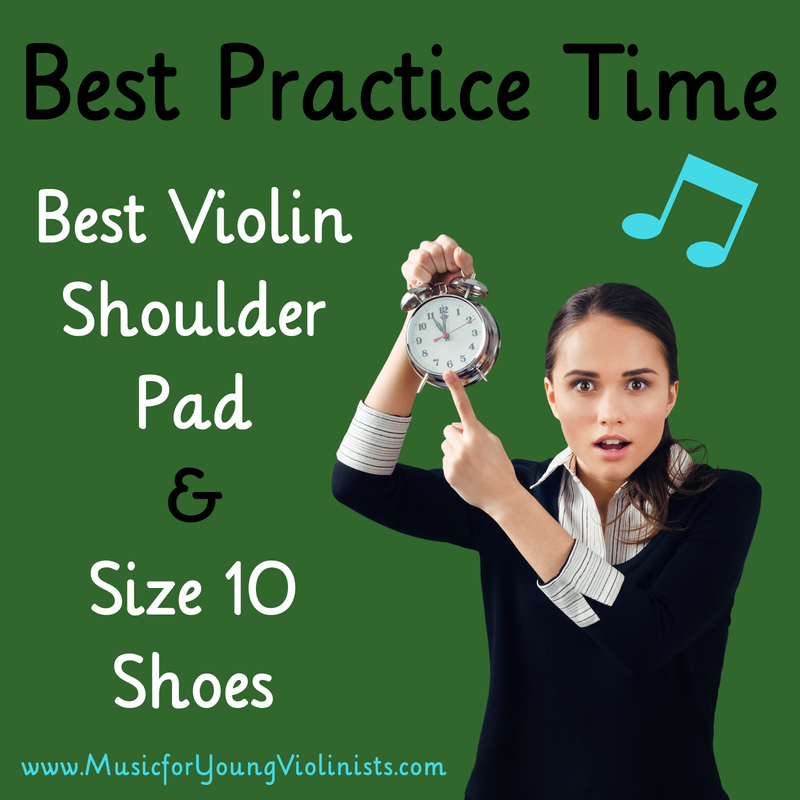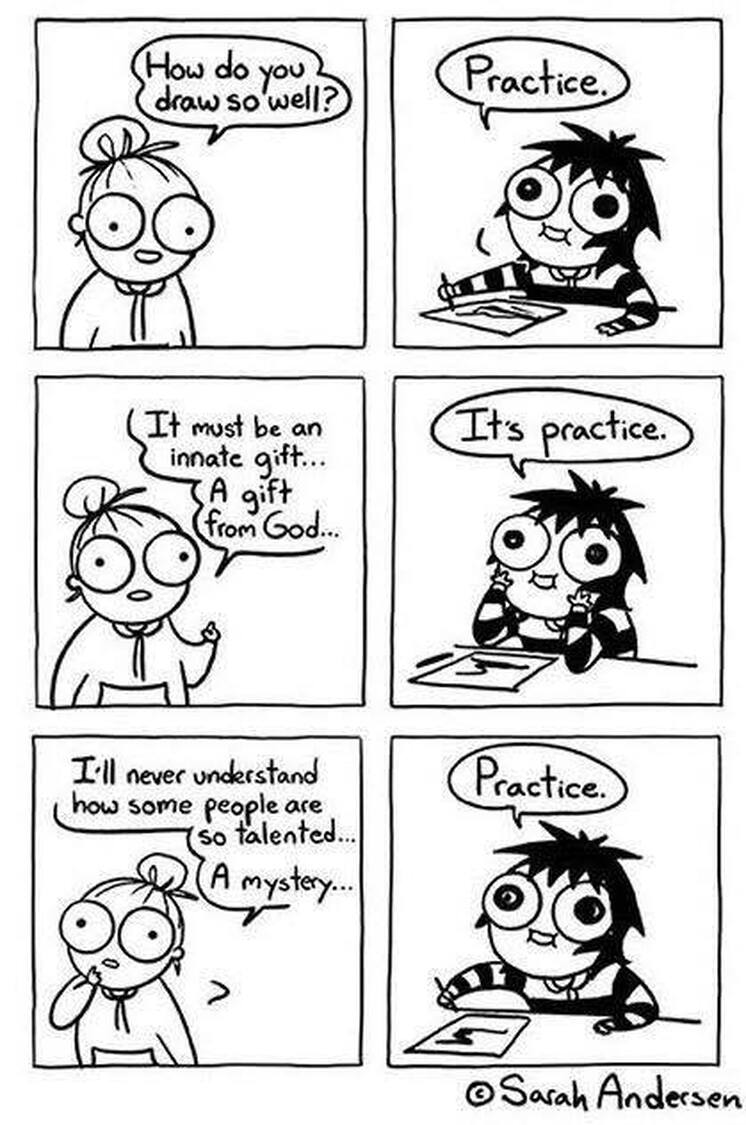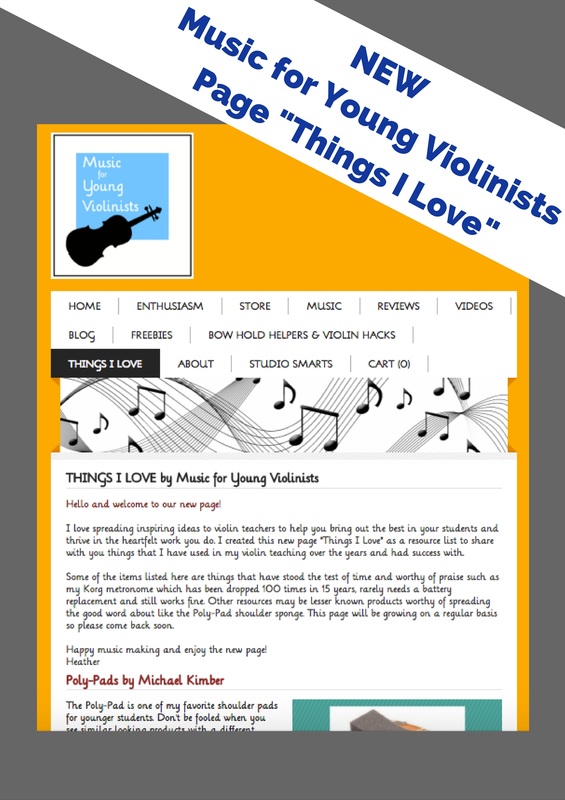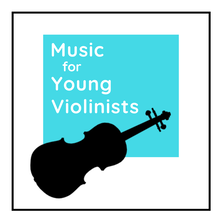|
Have you ever received advice from a teacher that may work for everyone else but would end your (or your child's) violin career? We live in the information age where everyone seems to have an "expert" opinion about what is best. However, that does not mean that it is the "best" for your unique situation. Learn how to evaluate what is best for your (or your child's) practicing needs with this blog and video post explaining the importance of context.  Everything in this world exists in context including when to practice and what shoulder pad to use. Here I share my favorite metaphor about why size ten shoes are the best size to explain the importance of context and how to evaluate what is going to be the best formula for your (or your child's) violin practice needs. I felt that if I was going to do a series on practicing, which in itself asserts that I have an expert opinion on the subject, that it would be insincere to publish these posts/videos without adding the balancing view that this contribution to the practicing series adds: Life exists in context. What exactly do I mean by this? I think most violin teachers would agree that practicing in the morning is the optimal time to practice - the mind is fresh, the daily responsibilities have not accumulated yet (for either parent or child). Also, by practicing first thing in the morning, you achieve the triumphant feeling of having accomplished something of significance at the start of the day which empowers a young person to proceed confidently through the rest of their day. However, I know that more than one person reading this would assert that practicing first thing in the morning would be the kiss of death for their child or student because it would lead to negative power struggles as the child works against their delicate circadian rhythms resulting in defeat for all parties involved. Morning practice routines are just one example of many that we as adults have to consider in context when teaching the violin to young children. Other areas that come to mind are shoulder pads, chin rests, repertoire sequencing and musical genres. Keep the concept of context in the back of your mind when working with young musicians to help best support them in their journey learning the violin.
5 Comments
Counting stones are a variation on the abacus. They are easy to make and as simple as getting a jar and 10-20 of your favorite stones (or really, anything that is small, personal and is readily available). You can see a version I made as gifts for my students one year here. Counting stones will help make violin practice successful for the following reasons: 1- Anytime you can make something personal by choosing a unique stone (or sticker or toy, etc...) it will bring a positive connection to the experience. As advanced as the frontal lobes of our brains may be, what drives the show in our life experiences is the unconscious part of our minds. Making a simple positive connection like choosing your personalized counting stones will bring this positive influence into violin practice and help encourage the practice process. Helping to make a positive and personal connection is equally useful for a 5-year-old as it is for a 57-year-old, or in other words, is applicable for all ages. 2- Violinists need ways to release the repetitive stress involved in playing to avoid an injury. Laying practice stones out on the music stand will create a built-in mechanism for regularly relieving the arm from holding the instrument up (of using the left arm). Since I have injured myself in part thru lack of implementing healthy practice techniques such as this, I feel strongly about emphasizing this subject for future musicians to help preserve their music making experience. This led to inviting physiatrist Dr. Lin to do a presentation for my studio informing violinists and their parents about preventing violin related overuse stress injuries. The presentation, The content shared by Dr. Lin in his presentation The Violinist Athlete and Injury Prevention, is concise and solution oriented. 3- Tangible goals and tangible results. I was once teaching a 10-year old student named Julia, who came into her lesson with a look of wonder in her eyes as she stated: "Isn't it amazing that I just move my fingers and arms around and all this beautiful music comes out?!" She perfectly captured the awe of this magical experience of creating invisible art (which is what music is). Other art forms are visible - painting, films, the martial arts, etc... We violinists create invisible art and having something concrete to aid in our process such as counting stones can be useful in tracking progress and bringing a sense of groundedness to our practicing. 4- Optimize practice methodologies. In the correlating video, I show how to use practice stones to create better sequencing in violin practice. Too often students will play thru something 10x but only reinforce the incorrect bowing. With practice stones, a student can lay out an alternating pattern with one type of stone representing doing the correct bowing in the air and the other kind of stone for implementing the proper bowing on the instrument. I love this Sarah Andersen cartoon because it perfectly captures how we make progress in our art forms by just simply practicing.
It's not a mystery, it's practice. It's not magic, it's practice. Not one violinist in the entire world was born playing the violin. Each and every one of us had to practice, practice and practice. I love spreading inspiring ideas to violin teachers that help you bring out the best in your students and thrive in the heartfelt work you do. I created a new page here on the Music for Young Violinists project called "Things I Love" as a resource list to share with you things that I have used in my violin teaching over the years and had success with. Some of the items listed here are things that have stood the test of time and worthy of praise such as my Korg metronome which has been dropped 100 times in 15 years, rarely needs a battery replacement and still works fine. Other resources may be lesser known products worthy of spreading the good word about like the Poly-Pad shoulder sponge. This page will be growing on a regular basis so please check back soon. Featured on “Things I Love” is Helping Parents Practice (Ideas for Making it Easier) Volume 1 by Edmund Sprunger. This is HANDS DOWN my favorite resource to use in supporting parents practicing with their children. I appreciate this book so much that I have practically underlined every sentence in my copy because it is so clarifying and poignant. Sprunger combines decades of experience teaching Suzuki violin with his formal training in psychology to offer wise and compassionate perspectives that will elevate a parents understanding of why their child is responding or behaving in a certain way. He also offers solutions that are effective and healthy for addressing these specific situations. The book is divided into sections by practice topic and then further broken down into 2-5 page solutions for specific scenarios that a parent would encounter while helping their child practice. This concise organization was done with the busy teacher/parent in mind and makes it an especially convenient tool because you can look up your immediate situation without having to read an entire book. Thank you Ed and please let us know when Volume 2 is available. Learn more about Ed Sprunger and his resources HERE. To celebrate this new page we are giving away Ed Sprunger’s new book: Building Violin Skills: A Set of Plans Designed to Help Parents and Children Construct Positive Practices. To enter, just list one “Thing You Love” for your teaching and music making in the comments below. Winner will be chosen at random at the end of the month.
Children Speak in Code - Learn How to Interpret When a child declares they hate the violin (or practicing, or you for that matter) I caution you to interpret the meaning of such strong statements with great wisdom and care. Children experience all the same emotions as adults, and this includes frustration, shame and disappointment. Children speak in code because they do not yet have the maturity to word their feelings for the full explanation of their emotions to be articulated. I knew a little girl who started playing the violin at the age of 4. She was full fire and like many violinists tended to be an intense child. She would frequently verbalize strong statements in the home practice sessions saying things such as: This little girl had a wise mother who knew these statements were code with a meaning different from the words spoken. What this little girl really meant was: "I hate playing VIOLIN!!!" = I really just hate this terrible feeling of defeat and inadequacy inside of me. Your child may also be saying to you: "Please do not give up on me, I need your support and your years of wisdom to guide me through this challenge in a healthy way. I am counting on you to shine a light to a higher path for the challenge at hand. My strong reaction right now even illustrates my need for a healthy emotional expression in life and music is a perfect fit for me and this necessary release. Please do not quit before I do. Please look 20 years into the future and help me through this challenge. I am counting on you." "I hate YOU!!!" = "I hate disappointing you and feeling like a failure in front of you. "I hate PRACTICING!!!" = "I hate feeling left out and frankly it does not feel fair. There is more to this story and a happy ending. Somewhere around the age of 12 or 13 music became an incredibly compelling experience for this little girl and there was a shift with her relationship to practicing. She was starting to connect the dots now how practicing was a path to making her dreams come true. All of a sudden there were String Quartets to play in at summer institutes and sophisticated Concertos by J.S. Bach and A. Vivaldi. It was indeed exciting to be a musician and she finally took full ownership of home practicing so her mother no longer needed to come to lessons or help with home practice. This girl became so focused and fulfilled with her music that she went onto major in violin performance in her undergraduate. She continued to fall in love with music and even pursued a graduate degree in violin performance with an emphasis in Suzuki Pedagogy. She has been teaching for 15 years now and is extremely grateful that her mother was so devoted to a higher vision when times got emotionally rough growing up. This little girl with such a strong willed constitution presented great challenges to her mother while growing up but her mother continued to believe in the higher purpose of music education and was willing to weather the storm of these verbal outburts and occasions such as the little girl's violin becoming a projectile object (that is a nice way to say the violin was thrown across the room.) The moral of the story is to please interpret strong statements towards playing the violin and practicing with extreme caution.
I know that little girl who used to shout out in home practice very well because that little girl was me. Thank you mom for believing in me at such a young age and for staying focused on the higher purpose of this work. I am so grateful for your endearing support all of these years. |
Categories
All
Archives
February 2024
AuthorHi! It's me, Heather. I absolutely love working on the Music for Young Violinists project and all the many facets: blogging, website, music, teaching materials, freebies, videos, newsletter and giveaway contests. The best part is connecting with you so feel free to drop me a line. You can learn more about me on the "ABOUT" page. Thanks! |









 RSS Feed
RSS Feed
